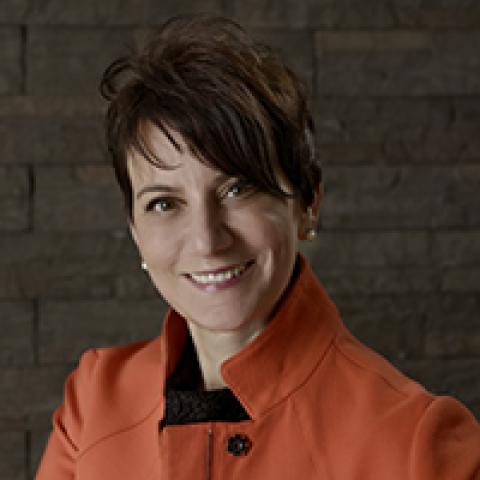Biennial season in Istanbul: following the three-legged cat
From Elif Uras’ ceramics to a Kadikoy café with a resident cat.
Welcome to Al-Monitor Istanbul.
We have a slightly longer newsletter to prepare for the exciting weeks ahead, as the 18th Istanbul Biennial, titled “The Three-Legged Cat,” and parallel events take over the volatile city. We’ll guide you through the noise: the map of the biennial, Elif Uras’ gilded ceramics, Pera Museum's two exhibits, and a cafe on the Anatolian side where Inci the cat still rules the conversation.
If you want to receive this newsletter or our other new weekly City Pulse newsletters — for Doha, Dubai and Riyadh — sign up here.
Thanks for reading,
Nazlan (@NazlanEr on X)
P.S. Have tips on Istanbul’s culture scene? Send them my way at nertan@al-monitor.com.
Also, don’t forget to follow us on Instagram: @citypulsealm

1. Leading the week: Waiting for the ‘Three-Legged Cat’

The French Orphanage, one of the venues of the Istanbul Biennial (Photo: IKSV- Sahir Ugur Eren)
When Lebanese curator Christine Tohme unveiled the theme of the 18th Istanbul Biennial in February, “The Three-Legged Cat,” (Sept. 20 through Nov. 23), she drew a parallel between the biennial and a three-legged cat — scarred yet agile, limping between pain and peril.
As the Biennial opens, her metaphor feels uncannily precise. In recent days, riot police pepper-sprayed and detained protesters at the main opposition party’s Istanbul headquarters. At the same time, a #MeToo reckoning has roiled Turkey’s cultural world: Survivors have named more than a hundred men in arts and media, prompting cancellations and institutions to sever ties.
Tohme’s curatorial statement speaks of “accelerated destruction, forced displacement and runaway crises” that fracture horizons and leave bodies adjusting to broken clocks. Like the three-legged cat, we stumble yet persist, reclaiming what must be preserved – not only in Turkey but in the region. Unsurprisingly, the artist list is global with a strong Middle East spine, mapping migration, loss, injustice and repair.

Planning ahead – venues of the biennial. (Photo IKSV)
This edition unfolds over three “legs”: exhibitions now, a 2026 academy with local initiatives, and a 2027 gathering that stitches the journey together. More than 40 artists spread across eight walkable venues from Beyoglu to Karakoy, with free public admission. A list of parallel events is in the Istanbul diary.

2. Word on the street: Fahriye Cafe

Fahriye Cafe (Photo: Courtesy of Fahriye Café)
Named after Ahmet Muhip Diranas’ nostalgic poem “Fahriye Abla” and the 1984 film it inspired, whose poster hangs at its heart, Fahriye Cafe in Kadikoy is a vintage refuge of books and good coffee. Young artists gather here for bites and spirited debates, while Inci the cat presides over conversations.
Location: Caferaga Mahallesi Leylek Sokak No:3/A

3. Istanbul diary

“The Great Mother” by Elif Uras (Courtesy of Galerist)
- Galerist hosts Elif Uras’s “Earth on Their Hands,” her fourth solo show at the gallery, opening Sept. 16 to coincide with the Istanbul Biennial. Blending hand-built ceramics from New York with slip-cast works from Iznik, Uras reclaims undervalued histories of women’s labor through gilded vessels, plates and tablets. Until Nov. 8.
- On Sept. 12, the Mahalla Festival launches with a panel at Postane, titled “The Innovative Power of Art and Media in Exile,” where moderator Jennifer Hattam leads a discussion with exiled journalists, photographers and artists on storytelling as a form of resistance. The festival itself opens the following evening at the historic Buyuk Valide Han, bringing together 16 artists from Afghanistan to the United States. Until Sept. 28.
- At artSumer, Deniz Uster’s “Ignition and Confluence: The River of Us” channels speculative science fiction to explore the evolution of collective existence.
- Pera Museum marks its 20th year with two exhibitions. “Feelings in Common” presents 29 artists from the British Council Collection through the lens of social and political context, while Swedish artist Asa Jungnelius debuts in Turkey with “A Verse Written with Earth, Fire, Water and Air,” exploring the alchemy of glass and stone.
- Hammams take the stage once more as exhibition venues. French artist Juliette Minchin transforms Zeyrek Cinili Hamam with “Where the River Burns,” conjuring rituals of purification and prophecy through wax, tin and paper. Young artist Ayse Naz Yardimci’s “Pinhan” unfolds at Kethuda Hamami Sept. 18-24.

4. Book of the week: “Erdogan's War”

“Erdogan’s War: A Strongman’s Struggle at Home and in Syria” (Oxford University Press, 2023) charts how Turkey’s president leveraged the Syrian conflict to consolidate his own power. Gonul Tol, founding director of the Middle East Institute’s Turkey program, offers essential reading for anyone seeking to understand how modern autocrats transform wars abroad into wars at home or vice versa.

5. Istanbul gaze

Bettina Pousttchi's “Vertical Highways V02” (Courtesy of Istanbul Modern)
Bettina Pousttchi's 5.9-meter sculpture, “Vertical Highways V02,” has parked a scarlet whirlwind in front of Istanbul Modern. “For a woman artist from countries such as Iran and Germany to present a sculpture in Istanbul that directly engages with the concept of the metropolis reinforces the museum’s relationship with the city,” notes Celenk Bafra, Istanbul Modern’s artistic director. The piece takes the spot once held by Tony Cragg’s Runner, underscoring the museum’s habit of keeping its front yard as dynamic as its galleries.

6. By the numbers
- According to the September 2025 Eurobarometer Enlargement survey, just 37% of Europeans say yes to Turkey in the EU, with only 8% shouting it and 29% politely nodding. A firmer 55% say no, half of them slamming the door.
- Romania (60%), Hungary (58%) and Croatia (57%) roll out the welcome mat, while Cyprus (13%), Austria (19%) and Greece (22%) keep it bolted shut.
